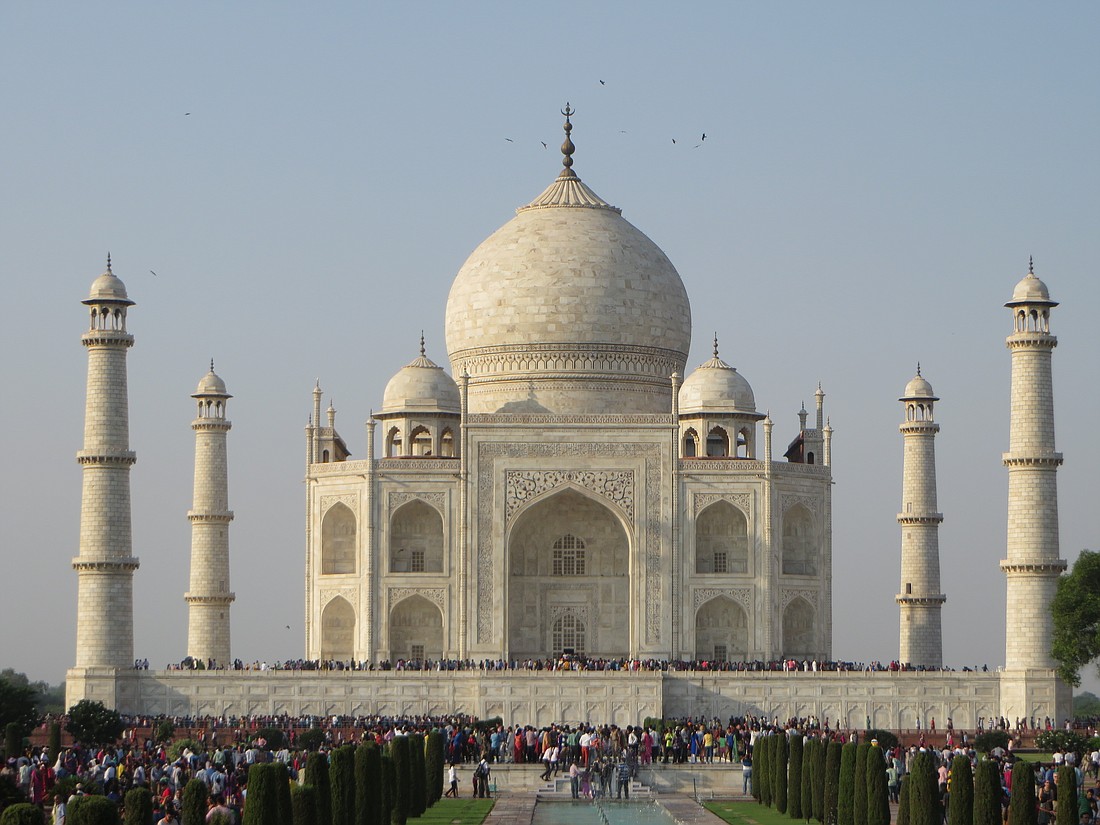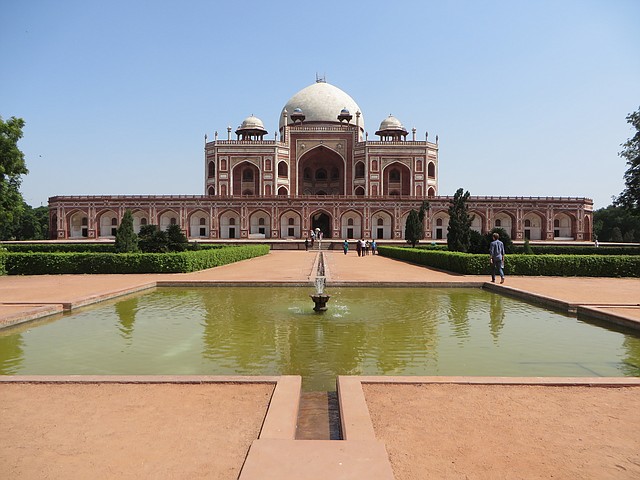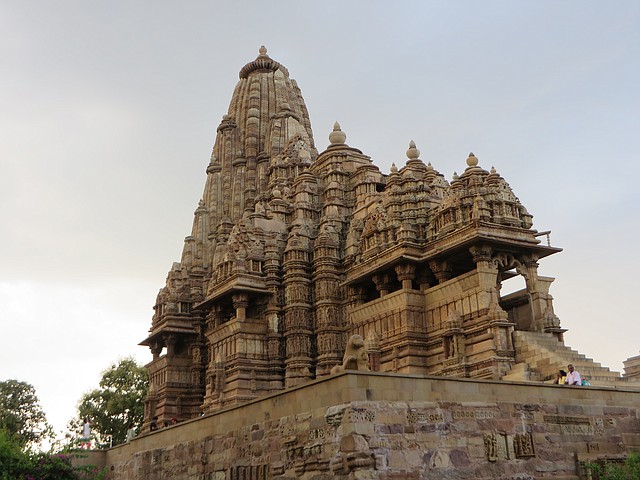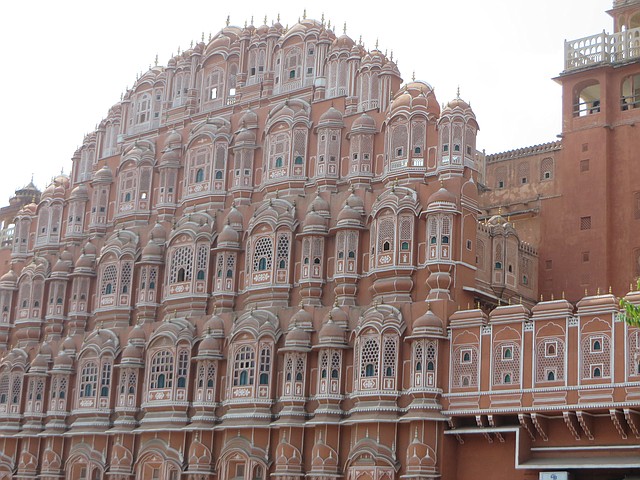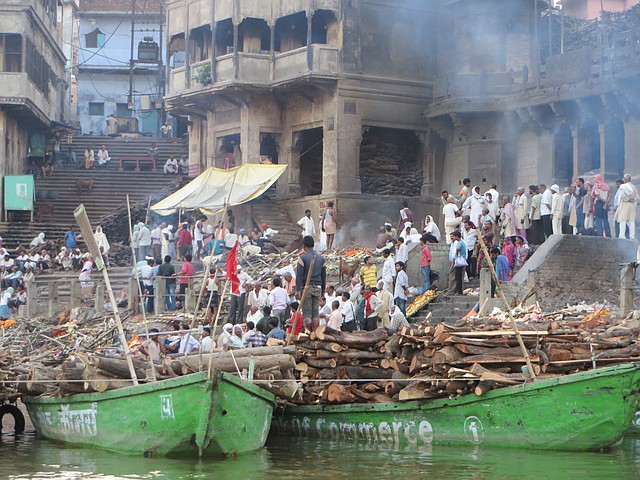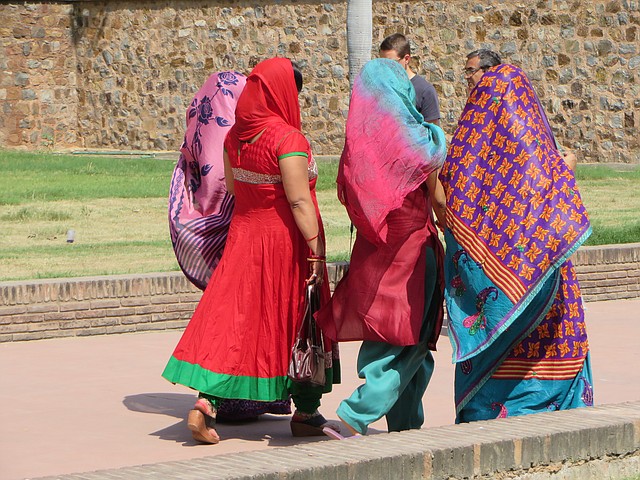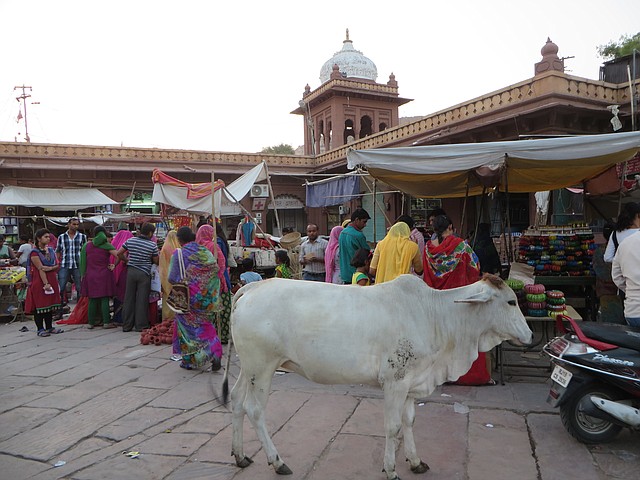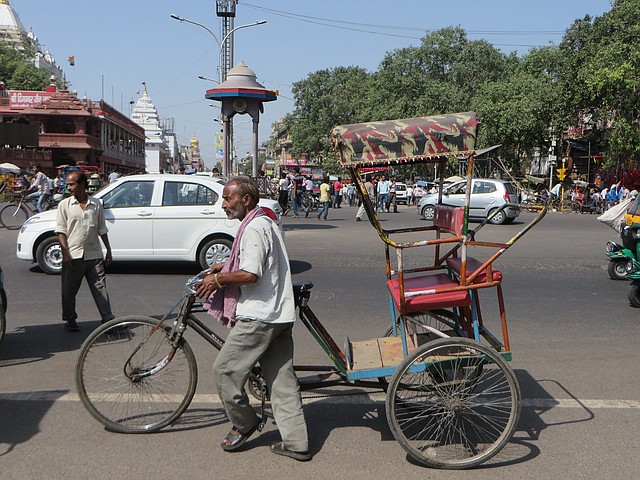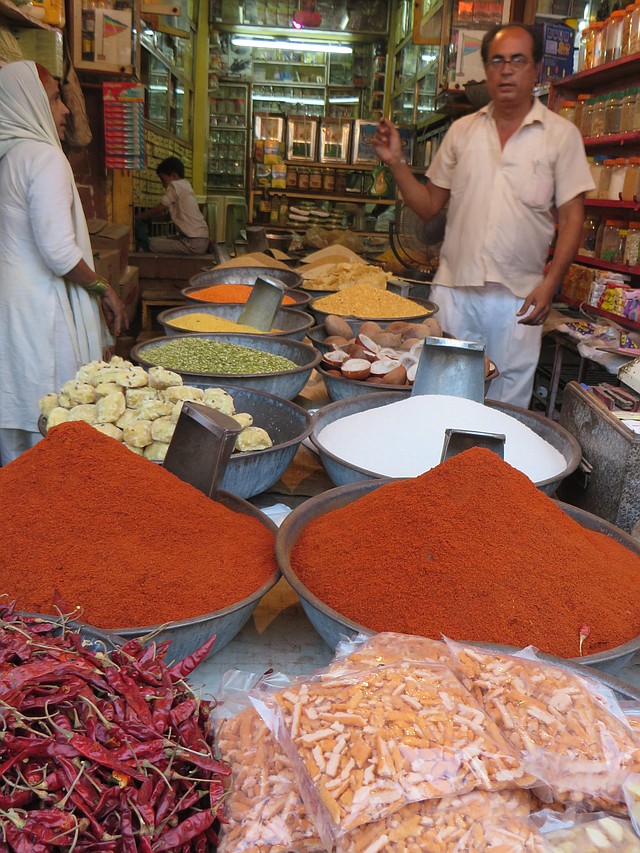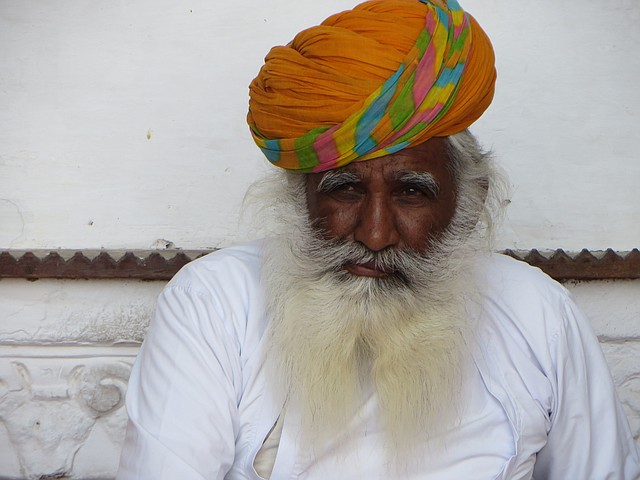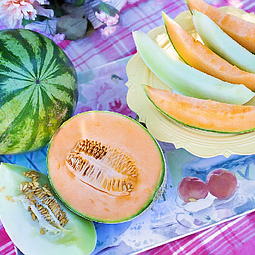Let yourself be wooed by India
March 23, 2015 at 6:00 a.m.
Falling in love with India is a gradual affair. First it flirts with you to get your attention. Then it begins to entice you with its charms. India, though, wants more from you than just a platonic relationship. It’s looking for a deeper commitment – one that seeks to bind itself to your heart and soul. Slowly and steadily you fall under its enigmatic spell, and before you know it, there’s a new love in your life.
Much of India’s appeal is due to its deep roots. With a civilization that can be traced back thousands of years, it has bragging rights as one of the world’s oldest cultures. The country is steeped in history and ancient sites abound, from opulent palaces and stalwart forts to dazzling temples and grand mosques. You’ll be mesmerized by the architectural wonders that seem to appear around every corner. In Delhi, alone, there are 1300 monuments. Among them is Jama Masjid, the largest mosque in the country and a magnificent example of Mughal architecture with its red sandstone and austere, white marble. An active place of worship since 1650 A.D., it has a courtyard that can hold 25,000 people at one time. Then there’s the Red Fort, a stunning example of a blend of Persian, Indian and European architecture. Completed a decade before the mosque, it was the seat of the Mughal Empire for more than 250 years and one of three UNESCO World Heritage Sites in the city.
In Agra, it’s all about the incomparable Taj Mahal, one of the Seven Wonders of the World and the greatest monument dedicated to love. This spectacular white marble mausoleum was the creation of the Emperor Shah Jahan as a memorial to his beloved queen, Mumtaz Mahal. It took twenty-two years to complete, involving a labor force of 22,000 skilled craftsmen. Seeing this masterpiece up close and personal is one of the many pinch-me moments that abound in this magical country. It’s particularly stirring at sunrise when the colors of the sky are reflected on the building’s shimmering walls.
One of the more unusual UNESCO World Heritage Sites is Khajuraho. The temples, which were constructed about a thousand years ago, are extraordinary examples of Hindu religious art. Lavish stone sculptures with erotic scenes adorn the facades. At first, you don’t notice the themes presented, but on closer examination, you are surprised, then taken aback at the explicitness of the details. The sophisticated design and building techniques used in the creation of these temples and the artistry of the sculptures are difficult to describe in words. Only in person, can you grasp their impact.
Jaipur, known as the Pink City, is home to the famed Amber Fort and Palace that is typically reached via elephant up a winding road to the ramparts. The town is also known for its City Palace, an immense complex containing a number of museums that offer an impressive collection of costumes, armory and miniature paintings. My personal favorite in Jaipur, however, is the Hawa Mahal or Palace of the Wind. This intriguing, eye-catching façade was built in 1799 so that the ladies of the court could use its unique windows and observe the bustling bazaar without being visible to the people on the streets.
You’ll also find a host of historical destinations in Jodhpur, including the fifteenth century Mehrangarh Fort, with its series of seven great gates atop a scenic hilltop locale. Of note are the fifteen handprints in the wall next to the huge entrance Iron Gate. They were etched into the edifice by the widow queens of Maharaja Man just prior to throwing themselves upon his funeral pyre in 1843, as the besieged fort was about to be conquered.
Equally as well-known is Udaipur’s fabled City Palace with its beautifully decorated rooms featuring thousands of handcrafted mirrors, brightly colored stained glass windows, expansive inlaid marble balconies and the unique peacock courtyard. The nearby Crystal Gallery houses the world’s largest assemblage of priceless crystal, a dazzling scene that almost always elicits gasps of admiration from viewers.
Lesser visited sites are equally impressive and provide interesting detours, minus the crowds. Fatehpur Sikri, for example, is a beautiful uninhabited city constructed primarily out of red sandstone. There’s a haunting quality to this abandoned place that once served as the capital of the region. As you wander about, you can almost hear the voices of the people that resided within its walls.
India’s diversity, from its many religions and languages to its traditions and topography, is a major allure for visitors. The country is one of the most religiously diverse nations in the world, with religion playing a central role in the lives of many of its people. It is the birthplace of Hinduism, Buddhism, Sikhism and Jainism, and is home to a multitude of houses of worship. Temples and mosques come in every shape and size, ranging from grand, over-the-top lavish complexes to simple, unadorned structures.
Throughout India, you’ll find people praying and observing various religious rites at almost every hour of the day. For some, the experience is intensely private; others opt for a more formalized group affair. Nowhere is this more apparent than in Varanasi, where the Ganges, India’s holiest river, is located. Pilgrims from all over the country, and even the world, come to this city to take part in age-old Hindu rituals. They head to the numerous ghats, or areas leading down to the river, where they bathe, pray and also cremate their loved ones so that the ashes can be washed away by the Ganges. At night, there are mass ceremonies with music and dance. The smell of smoke, incense and humanity fills the air in what can only be described as a mesmerizing, otherworldly scene.
Clothing also provides evidence that religion is the life-blood of many of the residents. Hindu women clad in colorful saris stroll through the markets alongside their Muslim counterparts dressed in burqas and hijabs. And you’ll hear a multitude of languages spoken no matter where you are, as there are twenty-two official languages in India and countless other dialects.
Another noticeable nod to religion and tradition are the cows that wander unchecked in the streets and even attempt to enter the shops. These animals are revered in Hindu culture and are viewed as symbols of non-violence and of the mother goddess. They are also known to be harbingers of good fortune and wealth. It is for these reasons they are treated with respect and every effort is made to avoid hitting or injuring them on the roads – even if this means swerving into another vehicle!
As for India’s topography, you’ll quickly note the diversity when you travel across the country. The range of landforms is extensive. There are jagged mountains, stark deserts, dense forests, vast plains and picturesque coastlines, providing something for everyone when it comes to landscape. This also applies to climate which runs the gamut from oppressively hot and dripping wet humid conditions in the lowlands to extreme cold in the upper elevations.
India lures visitors with its sensory-rich environment. This stimulation can, however, overwhelm you initially as it’s hard to take everything in at one time. Navigating the roads, for example, is a crazy, chaotic and challenging ordeal. The streets are full of people using all manner of transportation to get to their destinations. Motor scooters with entire families compete with cars, bikes and tuk-tuks, or auto-rickshaws that can be described as basically a lawn mower with a rusty metal top. Then there are the dilapidated trucks and overstuffed, ancient buses with passengers hanging out the windows, along with vendors and their carts, and a seemingly endless stream of pedestrians hauling all sorts of goods on top of their heads. And let’s not forget the cows and the occasional camel that tend to block the middle of the road. The streets are typically narrow and full of potholes and there are no apparent traffic lanes nor traffic lights at most intersections. The only rule is to stick to one direction and not deviate from that trajectory. That, and to use your horn profusely to warn others of your presence.
Eating in India is also an experience that taps into all the senses. The food is heavily influenced by religious and cultural choices and traditions, and cuisine varies from region to region. Your taste buds come alive with the intensity of the spices and herbs used in the various dishes. And your palette becomes a canvas for a plethora of flavors from sweet and salty to savory and fiery hot. An assortment of interesting textures also comes into play along with heavenly aromas, and you’ll use the omnipresent Nan bread to sop up every last bit of sauce on your plate. Then you’ll stumble back to your room, sated and in a food-induced coma.
When it comes to smells, India has it hands down. It’s not only the food that provides olfactory stimulation, but also the perfumed oils worn by the women (and some of the men), the incense that burns inside the temples, the tropical flowers in the gardens and yes, the rotting garbage and cow pies that litter the streets. This, too, is India.
India rolls out the red carpet when it comes to genuine hospitality. The people aim to please and to make visitors feel welcome in their country. Their goal is for guests to have a positive experience and they will do everything they can to assure you are comfortable. They also feel it’s important to help you understand their culture, as they are proud of their age-old traditions and ways. You will find their warmth and smiles contagious, and their graciousness, sincere. The ancient Sanskrit greeting, “Namaste,” which is still heavily in use today, says it all: “I bow to you and extend friendship and love.” The finest compliment you can pay the people of India is a return visit to this bewitching destination.
Deborah Stone is a travel and lifestyle writer, who explores the globe in search of unique destinations and experiences to share with her readers. She’s an avid adventurer who welcomes new opportunities to increase awareness and enthusiasm for travel and cross-cultural connections. Her stories appear in a number of publications as well as on various travel websites. Additionally, she can be frequently be heard dishing travel with the hosts of the NPR-affiliated and AARP produced talk radio show, “2 Boomer Babes.” Deborah is a longtime Seattle area resident, who currently resides in Santa Fe, New Mexico.
